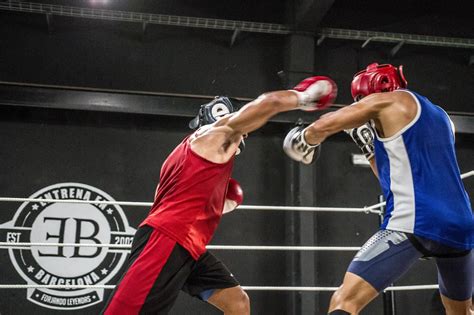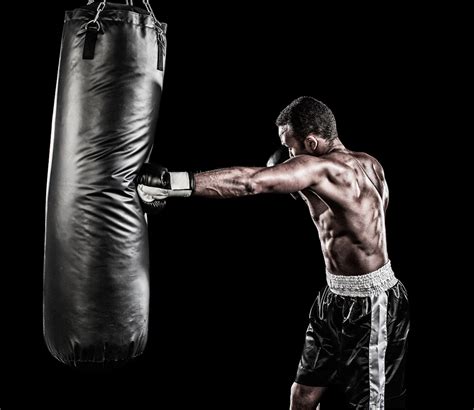Discover essential boxing tips for beginners, including gear, techniques, sparring partner selection, and building confidence on your journey to mastering the sport.A Beginner’s Guide To Sparring In Boxing
Embarking on your boxing journey can be both exhilarating and intimidating, especially when it comes to sparring. This essential component of the sport allows you to apply what you’ve learned while honing your skills in real-time scenarios. In this comprehensive guide, we’ll delve into the foundational aspects of boxing tailored specifically for beginners, from understanding the basics to essential gear and equipment. You’ll discover key techniques to master before stepping into the ring, learn how to choose the right sparring partner, and explore strategies to boost your confidence. Whether you’re eager to improve your technique or simply looking to enjoy the sport, this guide will provide you with the knowledge and tools necessary to navigate the world of boxing sparring with confidence. Join us as we break down each aspect, making your journey into the ring an enriching experience.
Understanding The Basics Of Boxing For A Beginner’s Sparring
For A Beginner’s journey into the world of boxing, grasping the fundamentals is crucial for effective sparring. New practitioners should focus on the essential aspects of boxing that will not only enhance their skills but also ensure a safe environment during sparring sessions.
First and foremost, it’s important to understand the basic stance. A proper stance is the foundation of boxing technique; it allows for balance, power, and mobility. A standard boxing stance involves positioning your lead foot forward with your back foot slightly behind, creating a triangle shape with your feet for stability. Additionally, keep your hands up to protect your face, elbows in close to your body.
Next, mastering the basic punches is essential. The three primary punches in boxing are the jab, cross, and hook. The jab is a quick and straight punch that helps maintain distance. The cross follows the jab and is thrown with the dominant hand, generating power. The hook, typically delivered from the side, can catch opponents off-guard. Practicing combinations of these punches will improve speed and coordination.
Another vital aspect is footwork. Good footwork allows boxers to move effectively, creating opportunities for offense while maintaining defense. Beginners should focus on lateral movement and pivoting to evade punches and position themselves advantageously during sparring.
Understanding the rhythm of boxing plays a significant role in sparring. Boxing is as much about timing as it is about strength. Tuning into the rhythm of your movements and those of your sparring partner will help in predicting their actions and reacting appropriately.
By focusing on these basic components, A Beginner’s approach to boxing sparring will be more productive and enjoyable. This foundation will help you implement more advanced techniques as you progress in your boxing journey.
Essential Gear And Equipment For A Beginner’s Approach
When starting your journey in boxing, having the right gear is crucial for both safety and performance. Here’s a comprehensive list of essential gear and equipment for A Beginner’s approach to sparring:
- Boxing Gloves: Invest in quality training gloves that provide adequate padding for your hands and knuckles. For beginners, 12-16 oz gloves are generally recommended to ensure protection during sparring.
- Hand Wraps: These are essential for protecting your wrists and knuckles. Properly wrapped hands can prevent injuries and provide additional support while you spar.
- Headgear: Wearing headgear is vital for minimizing the risk of cuts and concussions during sparring sessions. Look for well-padded, comfortable headgear that fits securely.
- Shin Guards: If you’re training in a gym that allows kicking, shin guards will protect your legs from impacts. Even if your focus is solely on boxing, safeguarding your legs is beneficial.
- Groin Protector: This is especially important for male boxers. A solid groin protector will offer necessary protection from accidental hits.
- Sweat-Wicking Gear: Comfortable athletic wear that manages sweat will help you stay cool and focused during your training sessions.
- Footwear: Proper boxing shoes provide the right grip and support. They help facilitate quick movements and footwork, which is critical in boxing.
- Water Bottle: Staying hydrated during training and sparring is vital. Always have a refillable water bottle nearby to maintain your hydration levels.
- Towel: Keep a towel handy to wipe away sweat during breaks and keep yourself comfortable as you train.
Having the above gear ensures that A Beginner’s experience in sparring is both enjoyable and safe. As you progress, you may consider upgrading or adding to your equipment, but starting with the basics is the key to building a solid foundation in boxing.
Key Techniques To Master Before Sparring As A Beginner
Before stepping into the ring for sparring, it’s crucial for A Beginner’s experience in boxing to focus on mastering a few fundamental techniques. These skills will not only enhance your performance but also ensure your safety and confidence throughout the sparring sessions.
| Technique | Description |
|---|---|
| Stance | Your boxing stance provides the foundation for balance and power. Keep your feet shoulder-width apart and your knees slightly bent. Depending on whether you’re orthodox or southpaw, position your dominant foot slightly back. |
| Footwork | Agile footwork allows for effective movement and positioning. Practice basic footwork drills, such as stepping forward, backward, and laterally, to maintain distance from your opponent while staying grounded. |
| Punching Technique | Focus on proper punching techniques, including jab, cross, hook, and uppercut. Ensure that you’re using your entire body for power, not just your arms, and practice the correct form to avoid injuries. |
| Defense | Learn basic defensive maneuvers such as slipping, bobbing, and weaving. These techniques help avoid incoming punches and create opportunities for counter-attacks. |
| Breathing | Good breathing control can help maintain stamina and manage stress during sparring. Practice rhythmic breathing patterns to stay relaxed and focused. |
By mastering these key techniques, A Beginner’s transition into sparring will be smoother and more successful. Each technique is a stepping stone to becoming a more skilled and confident boxer. Dedicate time to practice these fundamentals, and remember, sparring is a learning experience focused on improvement.
How To Choose A Sparring Partner As A Beginner
Choosing the right sparring partner can significantly impact your development as a boxer, especially for A Beginner’s journey. Here are some key factors to consider:
1. Skill Level: Aim to partner with someone who is at a similar skill level or slightly more experienced. This balance ensures that you are challenged while also feeling safe and supported.
2. Communication: Effective communication is vital. Before sparring, discuss your goals, limitations, and any specific areas you want to focus on. This will help foster a positive training environment.
3. Trust: Trust is essential in sparring. You should feel comfortable with your partner not to overexert themselves or intentionally harm you. Consider working with someone you know well or who is recommended by your coach.
4. Respect for Safety: Choose a partner who prioritizes safety just as much as you do. Both of you should adhere to safety protocols and know when to stop or take a break.
5. Variety: Don’t hesitate to spar with different partners. Each partner will have unique strengths and weaknesses, allowing you to gain a broader range of experience and technique.
6. Commitment: Consistency is crucial in boxing. Look for a partner who is equally committed to their training, as this will help you both stay motivated and make the most progress together.
In conclusion, choosing the right sparring partner is instrumental in ensuring a safe and effective training experience for A Beginner’s path to boxing. Take the time to assess potential partners based on these criteria, and you’ll set a solid foundation for your sparring sessions.
Developing Confidence And Strategy: A Beginner’s Roadmap
When it comes to boxing, the journey toward competence in sparring can be daunting for a beginner’s experience. Building confidence and developing strategic thinking are essential components that will make your sparring sessions more effective and enjoyable. Here are some actionable tips to help you navigate this pivotal stage.
1. Start Slowly
As a beginner’s sport, boxing is overwhelming at first. Gradually introduce yourself to sparring by participating in light sessions. This allows you to focus on applying the techniques you’ve learned without feeling the pressure of a competitive environment.
2. Understand Your Strengths and Weaknesses
Take some time to assess your own abilities. Are you better at offense or defense? Knowing where you excel can help frame your sparring strategy. You can focus on honing those strengths while also working on areas that need improvement.
3. Set Clear Goals
Establishing short-term objectives can build confidence. Whether it’s improving your footwork, practicing combinations, or maintaining guard, clear goals provide a sense of direction as you grow as a boxer.
4. Emphasize Communication
Engaging in effective communication with your sparring partner is crucial. Discuss your goals and limitations before beginning a session. This ensures both parties are on the same page regarding intensity and techniques, creating a supportive learning environment.
5. Analyze Your Sparring Sessions
After each sparring experience, take a moment to reflect on what went well and what could have been improved. Consider recording your sessions if possible, as watching yourself can provide insight that you might miss during the actual sparring.
6. Stay Relaxed and Fluid
Tension can negatively affect your performance. Focus on staying relaxed in the ring. Practice breathing techniques to remain calm and maintain fluidity in your movements, enabling you to think clearly and react appropriately.
7. Learn From Others
Observing more experienced boxers can provide valuable lessons. Whether in training or competitive matches, pay attention to their strategies, timing, and interactions. Don’t hesitate to ask for tips or feedback; fostering a sense of mentorship can be incredibly beneficial for a beginner’s development.
By focusing on these elements, you can effectively build confidence and develop a thoughtful strategy that will serve you well in your journey as a boxer. Embrace the learning process and remember that everyone starts somewhere, so enjoy each step of your beginner’s adventure!
Frequently Asked Questions
What is sparring in boxing?
Sparring in boxing refers to a practice session where two boxers train together in a controlled environment to improve their skills, technique, and timing.
Why is sparring important for beginners?
Sparring is crucial for beginners as it helps them apply techniques learned in training, build confidence in the ring, and develop their ability to adapt to a live opponent’s movements.
How can beginners prepare for their first sparring session?
Beginners can prepare by warming up adequately, focusing on basic techniques, practicing footwork, and communicating openly with their sparring partner about goals and comfort levels.
What protective gear should beginners wear during sparring?
Beginners should wear essential protective gear including headgear, mouthguards, boxing gloves, and appropriate footwear to ensure safety during sparring.
How can sparring help improve a boxer’s performance?
Sparring helps improve a boxer’s performance by enhancing their reflexes, stamina, and ability to read an opponent’s moves, which are essential skills for competitive bouts.
What should beginners focus on during sparring sessions?
During sparring sessions, beginners should focus on maintaining proper technique, controlling their punches, managing distance, and practicing defensive maneuvers.
How often should beginners spar while training?
Beginners should aim to spar once or twice a week, gradually increasing frequency as they become more comfortable and confident in their abilities.









